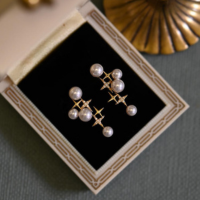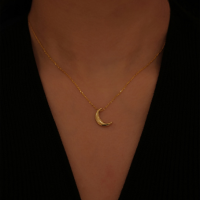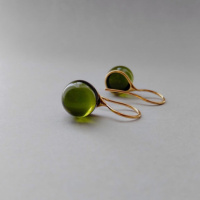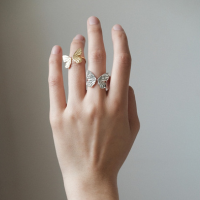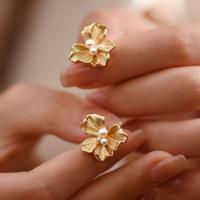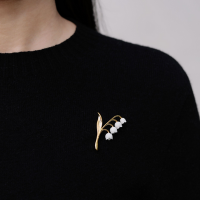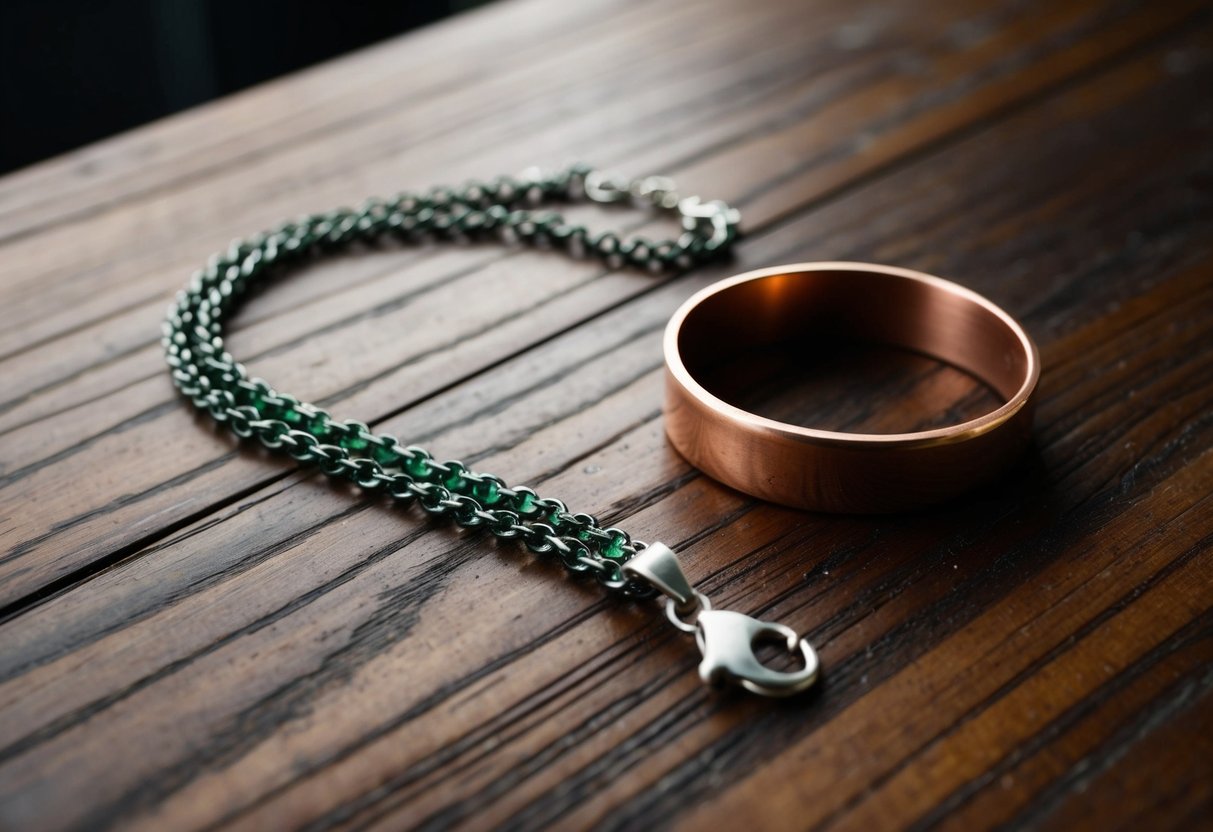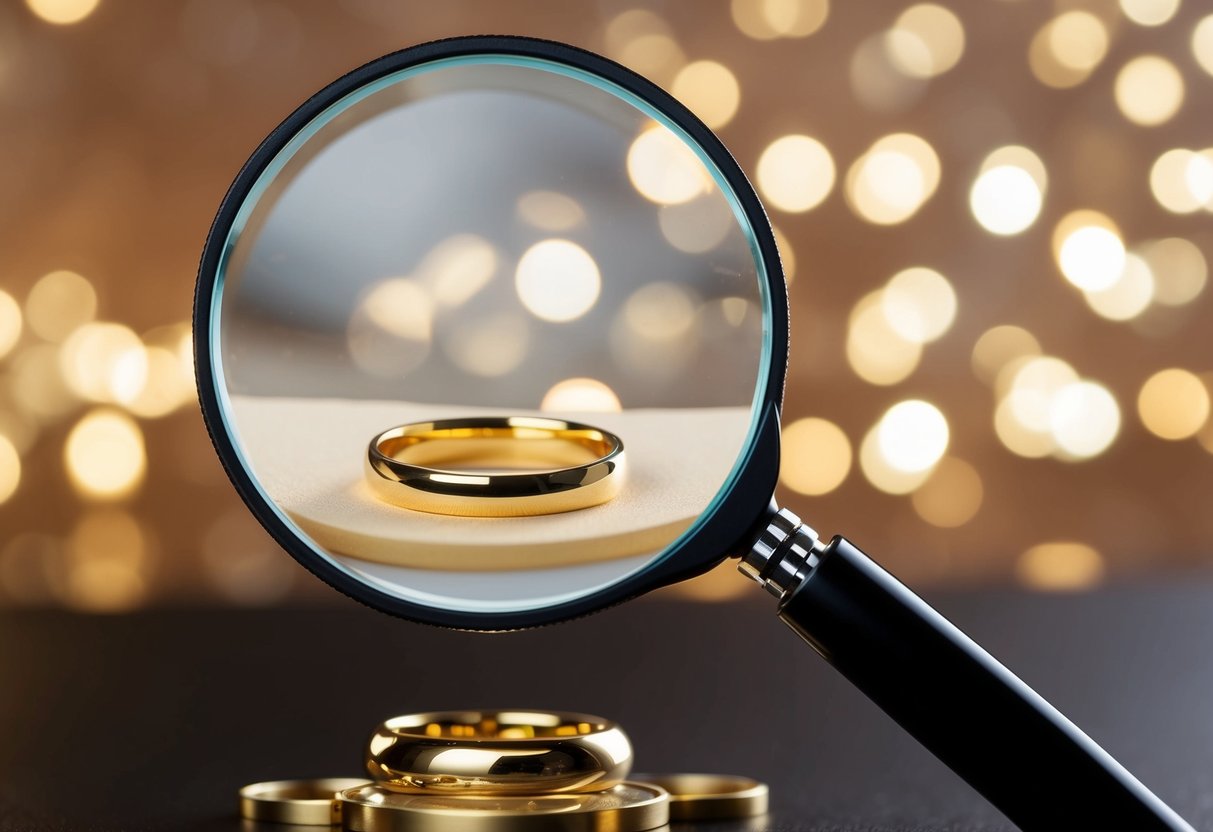
How to Tell if Jewelry is Real Gold
Check out our personalized jewelry collections! (kids drawing jewelry, coin jewelry, wire jewelry, fingerprint jewelry, handwriting jewelry, and more)
When it comes to buying gold jewelry, making sure it's real is important. Knowing how to spot genuine gold can save us from making an expensive mistake. There are simple ways to check if your gold is real, even from home. This guide will walk you through those steps, ensuring you feel confident with your gold pieces.
Many of us love wearing gold, but not all gold jewelry is created equal. Sometimes, it can be hard to tell just by looking at it. By learning the tricks to identify real gold, we can make smarter choices and avoid being misled by impostors.
Let's explore the signs of real gold, from professional assessments to quick home tests. With this knowledge, we can keep our collection both beautiful and authentic.
Key Takeaways
- Learn how to check if gold is real at home.
- Distinguish between genuine gold and impostors.
- Ensure your jewelry collection is authentic.
Understanding Gold Purity
Gold purity is essential in determining the value and quality of gold jewelry. Let's break down how karat ratings, purity marks, and color variations help us understand gold's authenticity.
Karat System Explained
Karat is a unit that tells us how pure the gold is. Pure gold is 24 karats, meaning there is no other metal mixed in. In the karat system, each unit represents 1/24th of the whole. For example, 18-karat gold is 18 parts gold and 6 parts other metals, making it 75% pure.
Lower karat gold is less costly but also less pure. Common karats are 24K, 18K, 14K, and 10K. Each has different durability and color. It's crucial to choose the right karat that meets our needs, balancing purity with strength.
Gold Purity Marks and Hallmarks
Gold jewelry often carries small symbols known as purity marks or hallmarks. These marks show the gold's karat or percentage of purity. Hallmarks are usually found on the clasp of a necklace or the inside of a ring.
For example, a stamp reading "750" means the gold is 75% pure or 18K. Hallmarks can also help us identify the origin and authenticity of the piece. Knowing what these marks mean can save us from buying fake or low-quality gold.
Color Variations in Gold
Gold isn't just its classic yellow. It comes in different colors, determined by the metals mixed with it. White gold is often combined with nickel or palladium. Rose gold has a warm, pink hue due to added copper.
Colors can affect the value and appeal of the jewelry. Green gold and other variations are less common but offer unique options for fashion lovers. Choosing the right color is about personal style as well as understanding how these colors are created.
Practical Tests for Authenticity
There are several practical methods to test if jewelry is real gold. These tests offer different ways to check for authenticity, from simple inspections to more technical procedures.
Visual Inspection Tips
We should start by inspecting the jewelry closely. Look for any noticeable discolorations, especially around the edges and clasp. Real gold maintains its shine and color without tarnishing.
Next, let's check for stamps or hallmarks. These often contain numbers like 14K, 18K, or 24K, indicating the gold's purity. Be wary of any missing or unclear markings, as these might suggest the piece isn't genuine.
Finally, observe the weight. Gold is denser than most metals, so it should feel heavy for its size. If the jewelry feels unusually light, it may not be real gold.
The Magnet Test
A magnet test is handy and straightforward. Gold is not magnetic, so it shouldn't be attracted to a magnet. We can use a small magnet to test.
If your jewelry sticks, it might be gold-plated or fake. However, keep in mind that some clasps and other parts might contain magnetic metals. Thus, it's best to focus on the main body of the jewelry. This test is quick but not foolproof, so it's better when combined with other methods.
Acid Scratch Test
The acid scratch test is more involved but also more conclusive. We'll need an acid test kit, which includes acids with different strengths.
First, scratch the jewelry lightly on a testing stone, creating a mark. Drop a small amount of acid on the mark. If the gold remains unaffected by the acid that matches its listed karat, it's likely real.
Care is needed with the acid, as it can be dangerous. This test should be done only if you're comfortable handling these materials.
Ceramic Plate Test
To try the ceramic plate test, find an unglazed ceramic tile or plate. Rub the jewelry gently across the surface.
Real gold will leave a gold streak, while fake versions often produce a black streak. It's a simple way to check, though you must be cautious to avoid scratching your jewelry.
This is a useful test to add another layer of verification.
Density Test
Gold has a specific density that's higher than many other metals. We can calculate this by weighing the jewelry and measuring its volume.
To find the volume, submerge it in water and measure how much water is displaced. Use the formula: Density = Mass/Volume.
Compare the calculated density with gold's standard density (19.3 g/cm³). A close match suggests authenticity. This test requires some precision, but it offers reliable results.
Professional Assessment
When determining if jewelry is genuine gold, professional assessment offers reliable results. Experts can give us an accurate opinion and conduct advanced tests to confirm authenticity.
Seeking an Expert Opinion
We can consult a jeweler or gemologist to assess our jewelry. These professionals use their experience to inspect and evaluate its characteristics. Visual inspection involves examining the piece for markings or hallmarks, indicating gold purity. Jewelers may also use a magnifying glass to check for surface irregularities or signs of wear that can show if the jewelry is gold-plated.
A fair and honest assessment can help us understand the true value of our jewelry.
Advanced Testing Techniques
Specialized tests help confirm the authenticity of gold jewelry. Experts may use acid testing, where a small drop of acid on the jewelry can show its reactions and identify karat quality. They might also use X-ray fluorescence (XRF), which uses safe X-rays to analyze metal composition without harming the piece.
Other methods include electronic gold testers that measure electrical conductivity. These advanced tests ensure accurate results, giving us confidence in our jewelry's authenticity.
Home Care for Gold Jewelry
Taking care of gold jewelry involves regular cleaning and proper storage. By maintaining and storing our pieces correctly, we can preserve their shine and beauty for years to come.
Regular Cleaning and Maintenance
To keep our gold jewelry looking its best, routine cleaning is essential. We can use mild soap and warm water to gently wash away dirt and oils. A soft cloth is ideal for drying, ensuring no scratches occur.
For stubborn dirt, a soft toothbrush can be helpful. We should avoid harsh chemicals that might damage our pieces. Professional cleaning once or twice a year is also a good idea to keep jewelry in perfect condition.
Storing Your Gold Jewelry Safely
When it comes to storing gold jewelry, keeping it separate from other metals and gemstones is crucial. We should use fabric-lined jewelry boxes or soft pouches to prevent scratches and tangling.
If we have multiple pieces, a jewelry organizer with individual compartments is a smart choice. Avoid humid places such as bathrooms, as moisture can lead to tarnishing. A cool, dry spot is best for preserving the luster and value of our gold treasures.
Common Myths and Misconceptions
It's easy to get confused about what makes gold jewelry authentic. Let's clear up some myths to help us tell what's genuine and what isn't when it comes to gold.
Gold Filled vs. Solid Gold
Many people think gold-filled jewelry is the same as solid gold, but that's not true. Gold-filled pieces have a thick layer of gold bonded to a base metal, like brass. This means they have much more gold than gold-plated items, making them more durable and valuable.
Solid gold jewelry, on the other hand, is made entirely of gold. The carat number tells us how much pure gold is in the piece. For instance, 24K gold is pure gold, while 14K gold has gold mixed with other metals.
When we compare them, gold-filled jewelry costs less than solid gold. They offer a practical option for those who love the look of gold without the price. Knowing the difference helps us make smarter choices for our jewelry collection.
The Real Value of Gold Plating
Gold plating covers a base metal like silver or copper with a microscopic layer of gold. This layer can be as thin as a fraction of a micrometer. While it gives an attractive appearance at first, it can wear off over time, especially with frequent wear.
Gold-plated items are usually cheaper than solid or gold-filled ones because they contain much less gold. This makes them a popular but less valuable choice.
We should also be aware that some sellers might try to pass off gold-plated jewelry as solid gold. It's crucial for us to check labels and certification to understand what we're really buying. By knowing these facts, we can avoid costly mistakes and choose the right pieces for our style and budget.
Purchasing Tips for Gold Jewelry
When we’re buying gold jewelry, the first thing we look for is a reputable dealer. We want to ensure they have a solid track record and good reviews. Trust and authenticity come first.
It's crucial to check the karat of the gold. Karat indicates purity. The most common are 10K, 14K, 18K, and 24K. The higher the number, the purer the gold.
Let’s remember to verify the hallmark. A real piece will usually have a stamp showing the karat value, like “10K” or “750”. This professional mark is a sign of authenticity.
We should ask for a certificate of authenticity when possible. This document provides assurance of the gold's purity and quality. It's always good to have proof.
Price can be an indicator. If the price seems too good to be true, it probably is. Gold retains value, so extremely low prices could be a red flag.
It helps to understand the market price of gold. Checking recent gold prices gives us a baseline for what to expect. Knowing this can help us negotiate better.
We can consider the return policy. A flexible return policy shows the seller's confidence in their product. It gives us peace of mind if we need to make a return.
Lastly, let’s trust our instincts. If something feels off, it’s okay to walk away and continue our search. Our peace of mind is priceless when making such an investment.
Frequently Asked Questions
We often find ourselves wondering about the authenticity of our gold jewelry. Let’s explore methods we can use at home for testing its genuineness, and what visual indicators can help us in the process.
What are home methods to test if a necklace is genuine gold?
One easy way is the magnet test. Real gold is not magnetic, so if our necklace is attracted to a magnet, it might not be real.
Another method is using a ceramic plate. Rubbing the jewelry on the plate can help us spot black streaks, indicating fake gold, while gold streaks mean it’s genuine.
Can a lighter be used to verify the authenticity of gold?
Yes, we can gently heat the jewelry with a lighter. Real gold will get brighter but won't darken, so if our piece changes color, it might not be pure gold.
What visual cues indicate that a piece of gold jewelry is authentic?
We should examine the jewelry for markings like "14K" or "18K," which indicate gold content. Consistent color and shine throughout the piece are usually signs of real gold.
How can one determine if unmarked metal is actually gold?
We can perform an acid test with a gold-testing kit. By applying a drop of acid to a small scratch on the item, we can test its reaction. No change suggests it might be real gold.
What steps can be taken at home to ensure jewelry is made of real gold?
Checking for discoloration or tarnishing is important since authentic gold doesn’t rust or tarnish. We may also weigh jewelry pieces and compare them to standard gold weights of similar size to see if they match.
Is there a quick test to distinguish between gold plated and solid gold items?
The scratch test can help. By scratching a small area and applying nitric acid, we can see how the metal reacts. If the underlayer changes color, our item might be gold-plated rather than solid gold.

